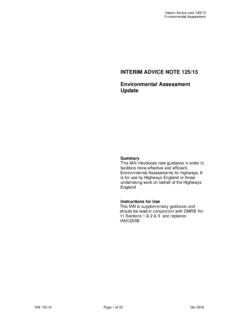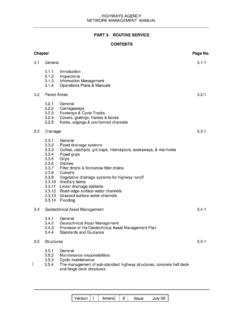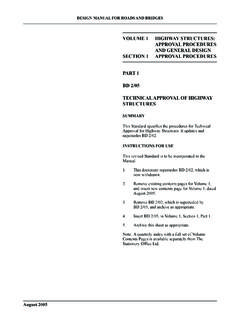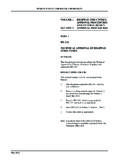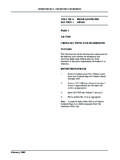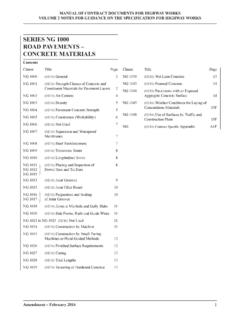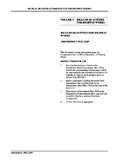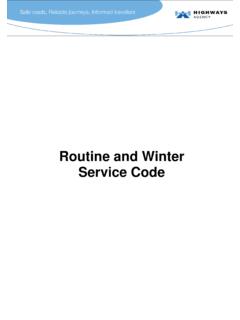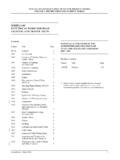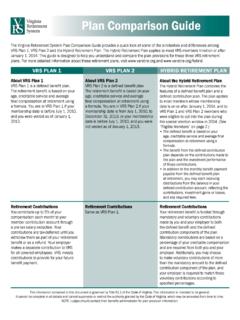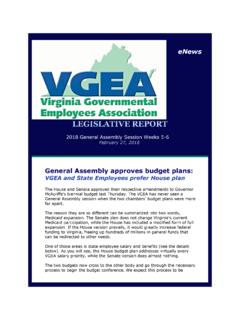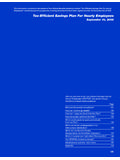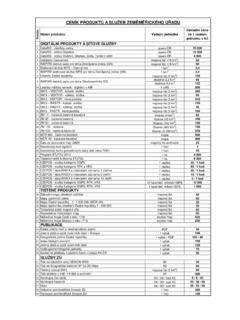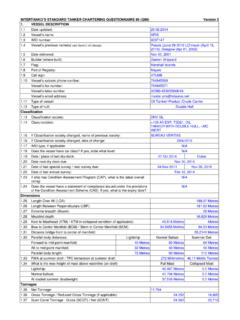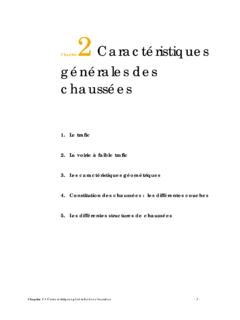Transcription of INTERIM ADVICE NOTE 198/17 Existing Dual …
1 IAN 198/17 Existing dual Carriageway All-Purpose Trunk Road Network: Additional Requirements and Relaxations IAN 198/17 1 August 2017 INTERIM ADVICE NOTE 198/17 Existing dual Carriageway All-Purpose Trunk Road Network: Additional Requirements and Relaxations Summary This document provides amendments and additional relaxations to the Design Manual for Roads and Bridges (DMRB) Requirements and ADVICE documents listed below, allowing greater flexibility when dealing with the constraints associated with enhancing Existing elements of the Existing dual carriageway all-purpose trunk road network in England. Instructions for Use This document is to be used in conjunction with: TD 9/93 TD 22/06 TD 27/05 Highway Link Design Layout of Grade Separated Junctions Cross-Sections and Headrooms TD 19/06 IAN 149 TD 39/94 TD 40/94 Requirements for Road Restraint Systems Existing Motorway Minimum Requirements The Design of Major Interchanges Layout of Compact Grade Separated Junctions IAN 198/17 Existing dual Carriageway All-Purpose Trunk Road Network: Additional Requirements and Relaxations IAN 198/17 Page 2 of 14 August 2017 Table of Contents 1.
2 Introduction 3 Scope and Purpose 3 Implementation 3 Relationship 4 Consultation 4 Design Strategy Record 4 Abbreviations 5 Definitions 5 2. Highway Link Design 6 General 6 Combinations of Relaxations 6 3. Layout of Grade Separated Junctions 7 General 7 Designing Merges 7 Designing Diverges 8 Geometric Requirements 8 4. Cross-Sections and Headrooms 11 General 11 Application of Relaxations to Existing Highway Cross-Sections 11 Hardstrip Width (Mainline Nearside) 11 VRS Setback (Mainline) 11 Paved Width (Connector Roads - Slip Roads) 11 5. Withdrawal Conditions 12 6. Contacts 13 7. Normative References 14 IAN 198/17 Existing dual Carriageway All-Purpose Trunk Road Network: Additional Requirements and Relaxations IAN 198/17 Page 3 of 14 August 2017 1.
3 Introduction Scope and Purpose This document provides additional geometrical relaxations to the Design Manual for Roads and Bridges (DMRB) Requirements and ADVICE Documents (RAD) TD 9: Highway Link Design [Ref 1], TD 22: Layout of Grade Separated Junctions [Ref 2] and TD 27: Cross-Sections and Headrooms [Ref 3] allowing designers greater flexibility when dealing with the constraints associated with modifying Existing dual carriageway all -purpose roads. This document allows relaxations to elements of a design, when modifying Existing dual all-purpose roads that, although not permitted by the parent DMRB document, would generally be approved if they were submitted to the Overseeing Organisation as a Departure from Standard.
4 The requirements in TD 9 [Ref 1], TD 22 [Ref 2] and TD 27 [Ref 3] shall be applied to the design in the first instance. Only where it is not considered practicable by the designer, in consultation with the Overseeing Organisation, to comply with the requirements of the parent document, may the relaxations contained in this document be applied. A Design Strategy Record (DSR) shall be produced by the designer to record justifications for additional relaxations. Implementation Subject to the requirements in paragraph , this document shall only be applied when modifying Existing elements of dual carriageway all-purpose roads. For the construction of new elements, a new slip road, the parent DMRB documents shall be used. The requirements and ADVICE in this document shall not be applied to motorways, smart motorways, expressways or roads forming new routes.
5 For Existing motorways, reference shall be made to IAN 149: Existing Motorways: Additional Requirements and Relaxations [Ref 4]. For requirements and ADVICE for smart motorways reference shall be made to IAN 161: Smart Motorways [Ref 5]. The modification of Existing Hard Shoulder Running schemes shall be in accordance with IAN 111: Managed Motorways Implementation Guidance Hard Shoulder Running [Ref 6]. The relaxations in this document amend a number of paragraphs in the DMRB parent documents. Where this occurs, the amended paragraph from the parent DMRB documents are noted at the end of the text. If there is a discrepancy between the current version of the parent DMRB document and the version referenced in this document the designer, in consultation with the Overseeing Organisation, shall determine the most appropriate document to apply.
6 This document shall be implemented immediately, except where: a) The procurement of works, at any stage from conception through design to completion of construction, has reached a point at which, in the opinion of the Overseeing Organisation, use of this document would result in significant additional expense or delay progress (in which case the decision shall be recorded in accordance with the Overseeing Organisation s procedure); or b) A contract has terms which apply specifically to the implementation of new requirements. No Departures from Standard are permitted from the relaxations in this document. Where a Departure from Standard is required, it shall be made against the original requirements within TD 9 [Ref 1], TD 22 [Ref 2] and TD 27 [Ref 3].
7 IAN 198/17 Existing dual Carriageway All-Purpose Trunk Road Network: Additional Requirements and Relaxations IAN 198/17 Page 4 of 14 August 2017 Relationship This document should be used in conjunction with the following DMRB RADs: TD 9 Highway Link Design TD 22 Layout of Grade Separated Junctions TD 27 TD 39 TD 40 TD 19 IAN 149 Cross-Sections and Headrooms The Design of Major Interchanges Layout of Compact Grade Separated Junctions Requirements for Road Restraint Systems Existing Motorway Minimum Requirements Consultation The Overseeing Organisation shall be consulted in the following circumstances: a) If verge widths at structures are reduced to zero, in order to consider the implications for routing and maintenance of underground equipment, and to consider the safety implications for road workers and any pedestrians who may exit a stricken vehicle.
8 B) If a merge layout is amended in accordance with either paragraph or of this document. c) If a diverge layout is amended in accordance with paragraph of this document. Design Strategy Record When applying this document in whole or in part, the designer shall develop a Design strategy Record (DSR). The DSR shall be developed and maintained from the operational concept stages through to project completion. The purpose of the DSR is to record key design decisions, constraints and assessments, in support of using the relaxations within this document in lieu of the requirements in the parent DMRB documents. The DSR content shall include the rationale behind the designer s decision making process. As a minimum, the DSR shall record the following: a) Subject to paragraph of this document, a causal analysis of the local Personal Injury Collision history to identify any performance issues or trends, comprising, as a minimum, the most recent 36 month period of verified Personal Injury Collision data.
9 B) The consultation that has taken place in accordance with paragraph c) The strategy for determining traffic flows to be used in design (including data source and design year). d) Where the additional relaxations outlined in Chapters 2, 3 and 4 of this document have been applied and the justification for using them. e) Any judgements on the application of this document in accordance with paragraph of this document. f) Details of proposed mitigation to reduce any residual road safety risks related to the relaxed geometry, to an acceptable level. g) The cost and impacts of a scheme that would be compliant to the parent DMRB document. IAN 198/17 Existing dual Carriageway All-Purpose Trunk Road Network: Additional Requirements and Relaxations IAN 198/17 Page 5 of 14 August 2017 If the project is following the Project Control Framework (PCF) it is acceptable for the DSR to cross reference the relevant sections in the Safety Plan PCF Product if this includes the collision history and detailed analysis required by paragraph a) of this document.
10 Abbreviations DMRB Design Manual for Roads and Bridges DSR Design Strategy Record IAN INTERIM ADVICE Note PCF Project Control Framework RAD Requirements and ADVICE document VRS Vehicle Restraint System Definitions This IAN does not introduce any new technical definitions over and above those in TD 9 [Ref 1], TD 22 [Ref 2] and TD 27 [Ref 3]. The following general definitions are specifically relevant to the interpretation and application of the requirements and ADVICE in this document. Existing roads: Established operating roads on an Existing route. New route: New roads proposed on a new alignment. New junctions on Existing roads are also defined as new build. This includes new slip roads. IAN 198/17 Existing dual Carriageway All-Purpose Trunk Road Network: Additional Requirements and Relaxations IAN 198/17 Page 6 of 14 August 2017 2.
